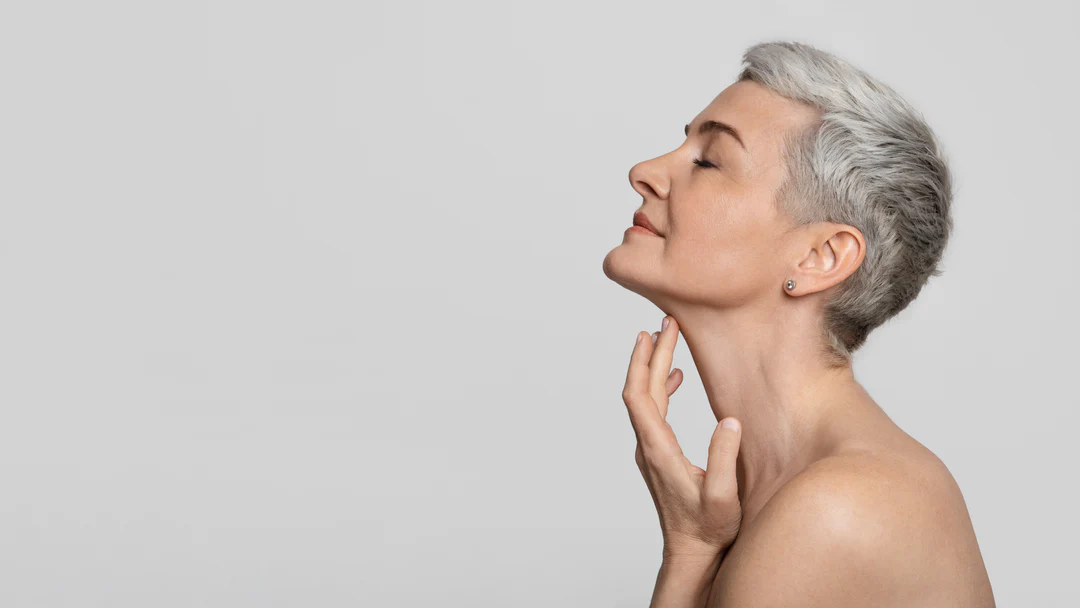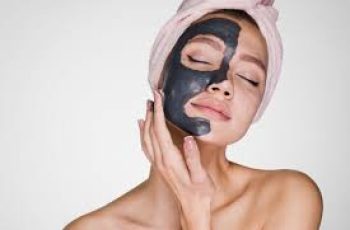Can Hyaluronic Acid Be Used with Vitamin C Oil?
Not only are hyaluronic acid and vitamin C effective skincare ingredients with impressive benefits, they also have powerful benefits when combined.
Unlike previous blog posts about these more serum-based ingredients, today we’ll take a look at how vitamin C oil and hyaluronic acid work together and how to best use them in your daily skincare routine.
Should Vitamin C be used before Hyaluronic Acid?
When using vitamin C and hyaluronic acid in separate formulas, it is recommended to use the vitamin C first. Follow up with hyaluronic acid to ensure that the skin barrier maintains proper moisture levels and can be protected from free radical damage.
However, when vitamin C is mixed into a facial oil formula, the situation changes. Hyaluronic acid is typically found in water or gel products, such as serums or moisturizers.
It’s best to keep this in mind when applying the products and consider how the order of your skincare routine can affect the effectiveness of the active ingredients. Start with the thinnest and work your way up to the thickest (e.g. cleanser, toner, serum, face oil, moisturizer, and SPF), making sure you don’t create a barrier on your skin that would compromise the effectiveness of your skincare products.
Can I use oils with hyaluronic acid?
The short answer is yes. The longer, more detailed answer is yes, but make sure you apply them in the correct order.
Hyaluronic acid can absorb 1,000 times its weight in water. It also has humectant properties, which means it draws moisture from the skin environment and traps it in the base layer of other product formulas.
As you can see, HA loves water, which is why you shouldn’t apply it over oil. Since hyaluronic acid is not soluble in oil, it can’t penetrate the oil and therefore can’t reach the area of skin to be treated. To prevent hyaluronic acid from simply settling on the oil, it’s best to apply a hyaluronic acid serum before applying your facial oil and moisturizer.
As far as oil-based cleansers go, they shouldn’t produce the same results as following a daily step like: B. A toner to wipe away any residue, leaving the skin clean and ready to absorb hyaluronic acid and other active ingredients.
Do I still need to moisturize after using hyaluronic acid?
You don’t necessarily need a moisturizer after using hyaluronic acid, as your skin will receive the hydrating benefits of the hyaluronic acid. However, if you want extra hydration, using a moisturizer not only creates a protective layer on the outer surface, but also allows the hyaluronic acid to draw more water into the skin, keeping the barrier as healthy as possible.
Is Too Much Hyaluronic Acid Harmful?
Yes, although it’s hard to believe. One of the main roles of hyaluronic acid is to attract moisture to the surrounding areas of the face, such as moisture or water on the surface of the skin.
Using too much hyaluronic acid can actually make the skin feel thirstier, making fine lines and dry wrinkles more noticeable. This is because the hydrating properties of hyaluronic acid cause the acid to try to absorb so much water that it begins to draw moisture from the underlying layers of the skin. You may notice that your skin feels dry, tight, and uncomfortable. Therefore, it’s best to follow the product instructions.
Can I use a face oil instead of a moisturizer?
You can use both! I recommend using a face oil as the last step in your routine. Especially for nighttime routines, as oils can sometimes affect how well makeup stays put.
If you really want to boost your skin’s moisture levels, apply it over your moisturizer while it’s still on your skin. This locks in moisture, and the barrier helps reduce exposure to free radicals, such as pollution, UV rays, and
fight environmental aggressors.
While the consistency of a face oil feels lighter than that of a moisturizer or cream, it’s actually thicker. Applying it as the last step in your routine allows the oil to penetrate the moisturizer and skin layers
to be supported. You’ll find that your skin barrier remains plump, hydrated, and full of youthful elasticity.
Should You Use a Vitamin C Serum Every Day?
Either way, your skin will love it if you use a vitamin C serum every day. Only after you’ve made sure that you and your skin type can benefit from introducing vitamin C into your skin care routine. It’s best to start using it every other day to build up skin tolerance. Once your skin has adjusted to the benefits, you can apply three to five drops all over your face.
After using a serum rich in vitamin C, you’ll find that your skin is able to fight free radical damage throughout the day while reducing discoloration such as hyperpigmentation and dark spots. By addressing these and other issues such as
to address signs of aging and dull complexion, you can achieve radiant skin.
That’s why I recommend adding vitamin C to your morning routine for the best results and to keep you looking radiant all day long. Should hyaluronic acid be applied in the morning or at night? Yes, you should apply hyaluronic acid morning and night. This works best because it allows the surface of the skin to remain functional and hydrated throughout the day. Not only does this make the complexion look plumper and fresher, but all other products applied to the skin are also absorbed into the skin faster, ensuring faster results. You’ve answered some of your questions about using hyaluronic acid and vitamin C oil. If you have any questions, don’t forget to follow us on Instagram!
DQH Knowledge drop: In your 20s, your skin cell turnover decreases. (Cell turnover is a key component in keeping your skin youthful.) You know what else slows down? Your collagen production. Starting in your 20s, collagen decreases by about 1 percent per year. Should you want to prevent fine lines and wrinkles, start by eliminating behaviors that contribute to premature aging. “If it’s bad for you, it’s bad for your skin,” says dermatologist Michel Somenek.
“Cigarette smoking reduces blood flow to the skin and causes premature wrinkling and a dull skin texture. Making the repeated pursed motion to inhale can also cause smoker’s lines. Alcohol and recreational drugs are toxins for the skin that damage its cellular structure and DNA,” Somenek tells us. “The faster you eliminate vices while you are young, the better chance your skin and body have to recuperate.” Also, adopting an anti-aging routine in your 20s is key. After all, the best offense is a good defense. We spoke to Somenek and experts Joshua Ross and Audrey Kunin to find out more.
Keep reading for the best anti-aging products for your 20s, according to skincare professionals.
Sunscreen
“We all know that the sun is the number one cause of skin aging and starting the prevention in your 20s is very important,” Ross says. “The majority of your sun damage won’t start to appear until you’re in your 30s, so don’t wait until you see it surface or you’ll be behind the curve. Stay ahead of it with a good-quality zinc-based sunscreen worn daily.”
Farmacy Green Defense Daily Mineral Sunscreen
An invisible sunscreen with SPF 30, plus botanical extracts meant to protect skin with tons of antioxidants. Bonus: It’s clean and fine to use under makeup.
Bareminerals Complexion Rescue™ Tinted Moisturizer Broad Spectrum SPF 30
Although we recommend you use your SPF and moisturizer separately, we also understand moments when you don’t have time or energy for that extra step. For those times, this bareMinerals moisturizer is a great thing to have on hand.
Vitamin C Serum
“A great introduction to anti-aging is to start with a vitamin C serum in your morning skincare routine,” Ross says. “It’s a powerful antioxidant that will neutralize free radicals and brighten the skin.” He adds that it’s a great way to counteract the effects of the sun’s harmful rays, which, as previously mentioned, are among the biggest causes of premature aging.
Drunk Elephant C-Firma™ Vitamin C Day Serum
The Drunk Elephant C-Firma is a lightweight serum that promises to give skin a glow by combining the brightening powers of vitamin C with ferulic acid, l-ascorbic acid, and vitamin E. The included sodium hyaluronate is meant to replace hydration loss, so you shouldn’t have to deal with any irritation.
Sunday Riley C.E.O. Rapid Flash Brightening Serum
This potent serum is jam-packed with vitamin C (15 percent, to be exact), which means it’s a potential superstar at both brightening skin and dousing it in antioxidants.
Peptides
Using peptides on your skin has many benefits, says Somenek. “The skin barrier is what defends the body against pollution, UV rays, bacteria, and toxins. It can be damaged by several everyday factors. Using topical peptides aids in building a stronger barrier,” he says. “Peptides comprise elastic fibers, which are a type of protein. These fibers help to make skin appear taut and firm. Peptides can also help repair damaged skin, relieve inflammation, and even out skin tone. Some peptides can kill acne-causing bacteria that is common in 20-somethings.”
Kunin agrees, saying, “Peptides are an excellent entry point for supporting collagen.” She recommends looking for face and eye treatments that contain these collagen-boosting powerhouses.
Charlotte Tilbury Magic Eye Rescue Cream
This Charlotte Tilbury super-emollient eye cream has a base of coconut oil and shea butter (read: it’s incredibly hydrating). Botanicals plus peptides are meant to help reduce dark circles and boost collagen, respectively.
This creamy moisturizer serves up potent collagen-boosting peptides and pycnogenol, and antioxidant-rich vitamin C. “Instead of sitting on top of the skin, peptides penetrate the outer layer so they go deep. The ‘signals’ they send tell the cells to produce elastin and collagen, which are needed for youthful-looking skin,” explains Somenek.
At-Home Peel Pads
Remember that skin cell turnover fiasco we talked about earlier? One way to help support it is by exfoliating. “Exfoliation is important to help keep skin fresh and luminous,” Kunin says. She recommends using at-home peel pads as an easy and effective way to exfoliate.
“The goal in your 20s is to fight the slowing pace of cell turnover. It is wise to use products that gently exfoliate, yet still remove oil and other impurities. Products that have Alpha Hydroxy Acids (AHA) or Beta Hydroxy Acids (BHA) are a good choice.”
According to Somenek, you should only exfoliate two to three times a week. “People of all ages are guilty of over-exfoliating and that can be too much of a good thing,” he says.
Dermadoctor Kakadu C Intensive Vitamin C Peel Pad
A few swipes of this Derma Doctor powerful peel pad promise to leave your skin glowing and smooth, thanks to the seven (yes, seven) types of chemical exfoliants, including AHA and BHA. It also contains vitamin C via Kakadu plum extract for added brightening and antioxidant protection.
KEY INGREDIENTS Kakadu plum extract is sourced from the Kakadu plum, a fruit grown in northern Australia. It contains vitamin C, which restores the skin’s natural barrier, increases collagen production, and soothes irritation.
Dr. Dennis Gross Skincare Alpha Beta® Universal Daily Peel Pads
These are the gold standard of peel pads, with a cult following and over 900 five-star reviews on Sephora. They’re easy to use and contain a blend of anti-aging exfoliating acids.
Emollient Night Cream
“In your 20s, you need to start upping the hydration in your skincare routine. You may have been cautious of over-moisturizing because of acne in your teens, but as you enter your 20s, your skin transitions and becomes drier,” Ross says. “I recommend an emollient night cream added into your evening skincare regimen.”
“Twenty-somethings need to make sure that they are not using creams that will clog their pores and cause excess oil production,” says Somenek. Opt for non-comedogenic products.
Cerave Skin Renewing Night Cream
One great choice is the CeraVe Skin Renewing Night Cream, which is a non-comedogenic night cream that leaves skin soft and glowy. It combines the moisturizing powers of ceramides and hyaluronic acid.
RoC Retinol Correxion Max Hydration Creme
“The best night cream ingredients contain retinol, benzoyl peroxide, and/or salicylic acid or hyaluronic acid. The goal is to moisturize, yet remove excess oil,” says Somenek. This Roc Retinol Correxion cream fits the bill as it contains both hyaluronic acid and retinol so it promises to moisturize while also being non-comedogenic.



